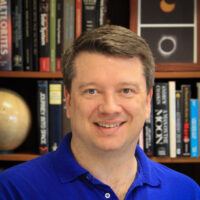NASA selects Planetary Society LIFE Proposal

Written by
Bruce Betts, PhD
Chief Scientist / LightSail Program Manager, The Planetary Society
June 19, 2014
NASA has selected a Planetary Society proposal to study accommodation of the Society’s LIFE (Living Interplanetary Flight Experiment) biomodule on NASA’s Asteroid Redirect Mission (ARM). The Planetary Society ARM LIFE proposal was one of 18 proposals selected for studies under the Asteroid Redirect Mission Broad Agency Announcement (BAA).
Developed using Planetary Society member support and expert science and engineering teams, LIFE flew on the failed Phobos Sample Return mission. LIFE uses a specially developed, incredibly rugged, multiple sealed, 88 gram “biomodule” designed to safely hold a number of biological samples. LIFE is a test of one aspect of the "transpermia" hypothesis: the possibility that life can move between nearby planets inside rocks ejected into space by impact events. The passive biomodule would act as a simulated meteoroid in deep space (beyond the Earth’s magnetosphere) and experience the high radiation and microgravity aspects of that trip, while ensuring separation and containment of microbes. Organisms flown are selected to be diverse non-pathogenic (not dangerous to humans) organisms that are well characterized and in most cases are extremophiles (able to survive in extreme environments).

Portions of LIFE (a subset of organisms in just the sample tubes) flew on the second to last space shuttle mission STS-134. That “Shuttle LIFE” experiment, though successful and useful as a run through test and for basic science results, was limited in terms of revolutionary new science since it flew only for a brief time and in low Earth orbit. ARM LIFE would carry out exploratory science with the first long term test of survivability and effects on life outside the protection of the Earth’s magnetosphere. Results may be relevant not only to understanding transpermia, but also to understanding more general effects on living organisms in deep space. The basic engineering concept to explore is integrating the LIFE biomodule into the ARM spacecraft in such a way that it could be recovered several years later by astronauts on the planned subsequent mission to the asteroid rock that has been redirected into lunar orbit.

In the selected study, we will form a candidate science team, review previously selected organisms in light of the ARM mission, review Phobos LIFE microorganism handling and study plans in light of ARM, and develop a preliminary approach to ARM spacecraft accommodation with the spacecraft team, and evaluate preliminary requirements for astronaut retrieval of the biomodule and its return to Earth.
For this study, I am the principal investigator, Director Emeritus Louis Friedman, the originator of the original LIFE experiment concept, is the co-investigator, and we plan to engage many of our past LIFE science and engineering team members as well as coordinate closely with NASA. The Planetary Society did not request money from NASA for this study, and will rely on support from members and donors. This study is sponsored in part by the Gelfand Family Charitable Trust, which was the prime sponsor for the development of the original Phobos LIFE and Shuttle LIFE projects.
Help The Planetary Society study the effects of space on life:
Support our core enterprises
Your gift today will go far to help us close out the year strong and keep up our momentum in 2026.
Donate

 Explore Worlds
Explore Worlds Find Life
Find Life Defend Earth
Defend Earth

